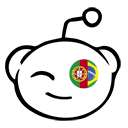Overview
Italian language and literature represent a cornerstone of Western cultural heritage. Originating from Vulgar Latin, Italian has evolved into a vibrant language spoken by millions worldwide, famed for its musicality and expressive power. Its literary tradition is equally profound, boasting a history of unparalleled creativity and influence.
Key Concepts
The development of the Italian language is intrinsically linked to its literature. Key concepts include:
- The transition from Latin to vernacular dialects.
- The standardization of the Tuscan dialect as literary Italian.
- The enduring influence of major poets and writers.
Deep Dive: Literary Eras
The Dolce Stil Novo
This poetic movement of the late 13th century, featuring poets like Guido Cavalcanti and Dante Alighieri, introduced new themes of love and spirituality, significantly impacting subsequent Italian poetry.
The Renaissance
A golden age for Italian literature, marked by the works of Petrarch, Boccaccio, and Machiavelli. This period saw a revival of classical learning and the flourishing of humanism.
Modern Italian Literature
From 19th-century realism (Verismo) to 20th-century existentialism and postmodernism, Italian authors like Italo Calvino and Umberto Eco continue to innovate and engage with global themes.
Applications and Influence
Italian literature has profoundly influenced global literary traditions, from the structure of the novel to poetic forms. Its themes of love, politics, and human nature remain universally relevant. Opera, deeply rooted in Italian poetic traditions, is another significant application.
Challenges & Misconceptions
Misconceptions often arise regarding the perceived difficulty of the language or the limited scope of its literary output. However, Italian is accessible, and its literary canon is vast and diverse, offering rich insights into history and the human condition.
FAQs
What is the oldest major work in Italian literature?
The Cantico delle Creature by St. Francis of Assisi is considered one of the earliest significant literary works in Italian, dating back to the 13th century.
Who are considered the ‘three crowns’ of Italian literature?
Often referred to as the ‘three crowns’ are Dante Alighieri, Petrarch, and Boccaccio, whose works laid the foundation for modern Italian literary language.




